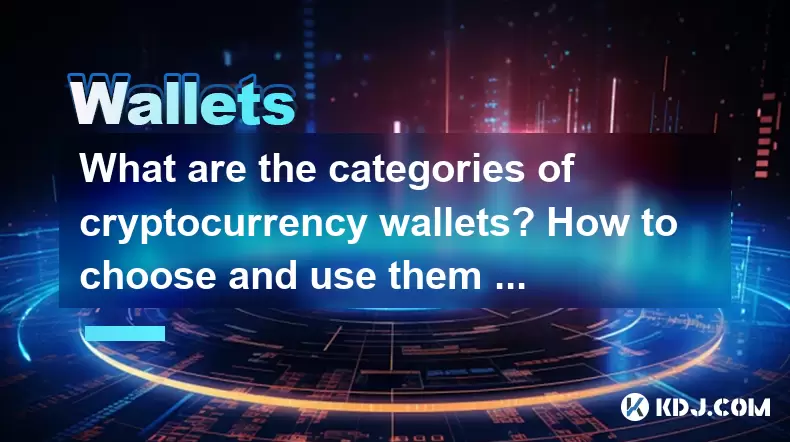-
 Bitcoin
Bitcoin $106,437.2012
0.82% -
 Ethereum
Ethereum $2,442.5287
0.82% -
 Tether USDt
Tether USDt $1.0005
-0.02% -
 XRP
XRP $2.1812
-0.27% -
 BNB
BNB $645.1327
0.45% -
 Solana
Solana $146.2379
0.39% -
 USDC
USDC $0.9999
-0.01% -
 TRON
TRON $0.2751
0.92% -
 Dogecoin
Dogecoin $0.1662
-0.23% -
 Cardano
Cardano $0.5827
-1.22% -
 Hyperliquid
Hyperliquid $37.5225
0.04% -
 Bitcoin Cash
Bitcoin Cash $479.0877
4.02% -
 Sui
Sui $2.7846
-3.27% -
 Chainlink
Chainlink $13.3576
0.84% -
 UNUS SED LEO
UNUS SED LEO $9.0252
-1.20% -
 Stellar
Stellar $0.2455
-1.07% -
 Avalanche
Avalanche $18.0680
-1.81% -
 Toncoin
Toncoin $2.8948
-1.07% -
 Shiba Inu
Shiba Inu $0.0...01164
-1.65% -
 Litecoin
Litecoin $85.0637
-0.06% -
 Hedera
Hedera $0.1526
-0.89% -
 Monero
Monero $316.2941
0.78% -
 Ethena USDe
Ethena USDe $1.0003
-0.04% -
 Polkadot
Polkadot $3.4113
-1.87% -
 Dai
Dai $1.0000
-0.01% -
 Bitget Token
Bitget Token $4.4488
5.16% -
 Uniswap
Uniswap $7.1740
3.09% -
 Pi
Pi $0.5968
11.43% -
 Pepe
Pepe $0.0...01010
-0.65% -
 Aave
Aave $264.3189
0.40%
What is MetaMask's keystore file and how to use it?
MetaMask's keystore file (.json) securely stores your encrypted private keys, protected by a password. Losing this file or password means losing access to your funds; never share it. Use it to import your account to a new device or wallet.
Mar 11, 2025 at 12:55 pm

Key Points:
- MetaMask's keystore file is a JSON file containing your private key in an encrypted format. It's crucial for accessing your Ethereum accounts.
- The keystore file is encrypted using a password you set during its creation. Losing this password means losing access to your funds.
- You use the keystore file to import your MetaMask account into a new instance of MetaMask or another compatible wallet.
- Never share your keystore file or its password with anyone.
What is MetaMask's Keystore File?
MetaMask, a popular Ethereum wallet, uses a keystore file to securely store your private keys. This file, typically ending with a .json extension, isn't a simple text file containing your private key directly. Instead, it contains your private key encrypted using a password you choose. This encryption layer is vital for security; without the password, the key remains inaccessible, even if someone gains access to the file itself. The keystore file is essential for accessing and managing your cryptocurrency within your MetaMask account. Think of it as a secure container holding the key to your digital assets.
How is the Keystore File Created?
When you create a new account in MetaMask, a keystore file is automatically generated and stored locally on your device. MetaMask handles this process seamlessly in the background. You'll be prompted to create a strong password to protect this file. This password is essential; remember it securely, as forgetting it renders your funds inaccessible. MetaMask doesn't store your keystore file on their servers; it remains solely under your control, residing on your computer or mobile device.
How to Use the Keystore File to Import an Account?
The primary use of the keystore file is to restore your MetaMask account on a new device or a fresh installation of MetaMask. This process is crucial for security and accessibility. If your device is lost or damaged, having a backup of your keystore file allows you to recover your assets. The import process involves providing the keystore file and the password you used during its creation.
- Locate your Keystore file: Find the location where MetaMask stores your keystore files. This location varies depending on your operating system.
- Open MetaMask: Launch MetaMask on your new device or installation.
- Import Account: Look for the "Import Account" option. This usually appears during the initial setup or within the settings menu.
- Provide Keystore file: Select the keystore file from your device's storage.
- Enter Password: Enter the password associated with the keystore file. MetaMask will then verify the password and import your account. If the password is incorrect, the import will fail.
Security Considerations Related to Keystore Files:
The security of your cryptocurrency hinges on the security of your keystore file and its associated password. Never share your keystore file or its password with anyone, under any circumstances. Legitimate services will never request this information. Treat your keystore file like a physical key to a vault; lose it, and you lose access to your funds.
Store your keystore file securely. Consider using a password manager to store the password securely and create a strong, unique password. Regularly backing up your keystore file is also vital. Store backups in multiple locations, ideally both online and offline. Use reputable cloud storage services for online backups and consider physical storage, such as a USB drive, for offline backups. Keep the backup files encrypted for added security.
What if I lose my keystore file or password?
Losing either your keystore file or its password will result in the loss of access to your MetaMask account and the associated cryptocurrency. MetaMask cannot recover your funds if you lose your password. There is no way to recover your private key or bypass the encryption without the password. Always prioritize securing your keystore file and password. Consider writing down your seed phrase as an additional backup measure. The seed phrase allows for the regeneration of your private keys, providing a second layer of security.
Common Questions:
Q: Can I use my keystore file with other wallets?
A: Yes, many Ethereum wallets support importing accounts using keystore files. However, always verify the legitimacy of the wallet before importing your keystore file.
Q: Is it safe to store my keystore file on a cloud service?
A: While cloud services offer convenience, they also present security risks. If the cloud service is compromised, your keystore file could be accessed. Consider using end-to-end encrypted cloud storage services for added security, but ideally, keep offline backups as well.
Q: What if my keystore file is corrupted?
A: A corrupted keystore file will prevent you from accessing your account. If you have a backup, you can use it to restore your account. If you don't have a backup, unfortunately, you will likely lose access to your funds.
Q: What is a seed phrase and how does it relate to my keystore file?
A: A seed phrase is a list of words that can be used to regenerate your private keys. While the keystore file is encrypted, the seed phrase provides an alternative method of recovering your account. It's crucial to secure your seed phrase as diligently as your keystore file.
Q: Can I transfer my cryptocurrency from my MetaMask account to another wallet without using the keystore file?
A: You can transfer cryptocurrency using your MetaMask account without directly using the keystore file. You will still need to use your password to access your account and authorize the transaction. The keystore file is primarily for account recovery and importing.
Disclaimer:info@kdj.com
The information provided is not trading advice. kdj.com does not assume any responsibility for any investments made based on the information provided in this article. Cryptocurrencies are highly volatile and it is highly recommended that you invest with caution after thorough research!
If you believe that the content used on this website infringes your copyright, please contact us immediately (info@kdj.com) and we will delete it promptly.
- Bitcoin Price Soars to $106,596: Is This the Recovery We've Been Waiting For?
- 2025-06-25 12:25:14
- XRP Ledger's New Era: Batch Transactions and Token Escrow Take Center Stage
- 2025-06-25 12:45:12
- JasmyCoin: Price Prediction & the Quest for New Highs
- 2025-06-25 12:25:14
- Arctic Pablo Coin: The Meme Coin Primed for Lift-Off? Plus, Bonk & SHIB Updates!
- 2025-06-25 12:45:12
- BigBear.ai, AMD, QuantumScape: Stocks Soar and Solid-State Batteries Get Real!
- 2025-06-25 12:50:13
- Bitcoin, Ethereum, and the Iran-Israel Ceasefire: A Crypto Market Update
- 2025-06-25 13:05:13
Related knowledge

What are the categories of cryptocurrency wallets? How to choose and use them safely?
Jun 21,2025 at 10:42pm
Understanding Cryptocurrency WalletsCryptocurrency wallets are essential tools for anyone involved in the digital asset ecosystem. They allow users to store, send, and receive cryptocurrencies securely. Unlike traditional wallets that hold physical money, crypto wallets manage cryptographic keys—private and public—which interact with blockchain networks...

Which one is more suitable for high-frequency trading users, browser plug-in wallets or independent application wallets?
Jun 23,2025 at 08:22am
Understanding the Role of Wallets in High-Frequency TradingFor high-frequency trading (HFT) users in the cryptocurrency market, wallet selection is critical due to the need for speed, security, and seamless integration with trading platforms. HFT involves executing a large number of trades within seconds or even milliseconds, which demands a wallet that...

What are the differences between the operating mechanisms of on-chain wallets and off-chain wallets? Is there a big difference in transaction fees?
Jun 25,2025 at 08:49am
Understanding On-Chain WalletsOn-chain wallets are digital wallets that directly interact with the blockchain network. These wallets store users' private keys, which are essential for signing and authorizing transactions on the blockchain. When using an on-chain wallet, every transaction must be recorded and verified by the decentralized nodes in the ne...

Which is more convenient to recover, a mnemonic wallet or a private key wallet? Will security be compromised?
Jun 20,2025 at 06:36am
Understanding Mnemonic Wallets and Private Key WalletsIn the world of cryptocurrency, wallet recovery is a crucial aspect that users must understand before storing digital assets. Two popular methods for securing and recovering wallets are mnemonic phrases and private keys. Both serve as gateways to access funds, but they differ significantly in terms o...

What is the difference in security between a mobile wallet and a desktop wallet?
Jun 22,2025 at 12:35pm
Understanding the Security Aspects of Mobile WalletsMobile wallets are digital wallets designed to run on smartphones, allowing users to store, send, and receive cryptocurrencies conveniently. The security of mobile wallets largely depends on how well the device is protected from malware, phishing attacks, and unauthorized access. One key feature of mob...

Which is more risky, a web wallet or a client wallet? How to reduce the risk of use?
Jun 22,2025 at 09:21pm
Understanding Web Wallets and Client WalletsWhen managing cryptocurrencies, choosing the right type of wallet is crucial. Web wallets and client wallets are two popular options among users, each with its own set of advantages and disadvantages. A web wallet operates through a browser interface and is usually hosted online by third-party services. This m...

What are the categories of cryptocurrency wallets? How to choose and use them safely?
Jun 21,2025 at 10:42pm
Understanding Cryptocurrency WalletsCryptocurrency wallets are essential tools for anyone involved in the digital asset ecosystem. They allow users to store, send, and receive cryptocurrencies securely. Unlike traditional wallets that hold physical money, crypto wallets manage cryptographic keys—private and public—which interact with blockchain networks...

Which one is more suitable for high-frequency trading users, browser plug-in wallets or independent application wallets?
Jun 23,2025 at 08:22am
Understanding the Role of Wallets in High-Frequency TradingFor high-frequency trading (HFT) users in the cryptocurrency market, wallet selection is critical due to the need for speed, security, and seamless integration with trading platforms. HFT involves executing a large number of trades within seconds or even milliseconds, which demands a wallet that...

What are the differences between the operating mechanisms of on-chain wallets and off-chain wallets? Is there a big difference in transaction fees?
Jun 25,2025 at 08:49am
Understanding On-Chain WalletsOn-chain wallets are digital wallets that directly interact with the blockchain network. These wallets store users' private keys, which are essential for signing and authorizing transactions on the blockchain. When using an on-chain wallet, every transaction must be recorded and verified by the decentralized nodes in the ne...

Which is more convenient to recover, a mnemonic wallet or a private key wallet? Will security be compromised?
Jun 20,2025 at 06:36am
Understanding Mnemonic Wallets and Private Key WalletsIn the world of cryptocurrency, wallet recovery is a crucial aspect that users must understand before storing digital assets. Two popular methods for securing and recovering wallets are mnemonic phrases and private keys. Both serve as gateways to access funds, but they differ significantly in terms o...

What is the difference in security between a mobile wallet and a desktop wallet?
Jun 22,2025 at 12:35pm
Understanding the Security Aspects of Mobile WalletsMobile wallets are digital wallets designed to run on smartphones, allowing users to store, send, and receive cryptocurrencies conveniently. The security of mobile wallets largely depends on how well the device is protected from malware, phishing attacks, and unauthorized access. One key feature of mob...

Which is more risky, a web wallet or a client wallet? How to reduce the risk of use?
Jun 22,2025 at 09:21pm
Understanding Web Wallets and Client WalletsWhen managing cryptocurrencies, choosing the right type of wallet is crucial. Web wallets and client wallets are two popular options among users, each with its own set of advantages and disadvantages. A web wallet operates through a browser interface and is usually hosted online by third-party services. This m...
See all articles
























































































